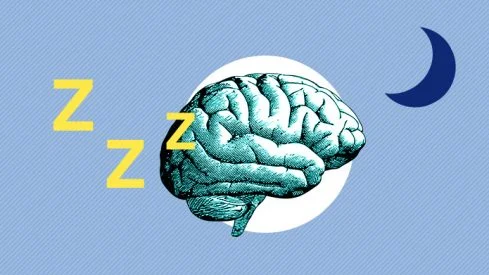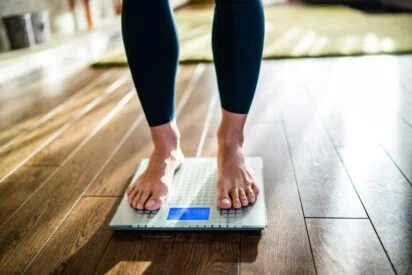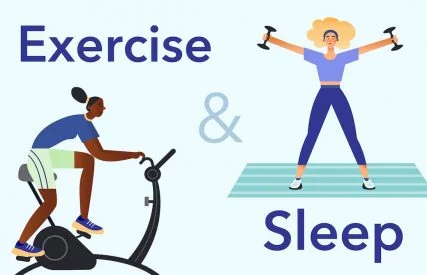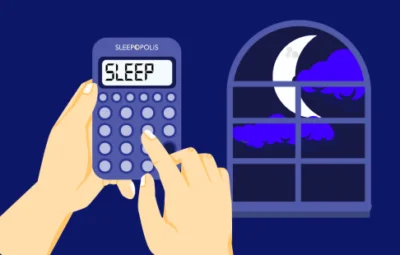Sudden infant death syndrome (SIDS) describes one type of sudden unexpected infant death, and it can be tough to hear about — especially as a new or expecting parent. But even though these numbers may feel scary to read, the more we know about safe sleep, the better we can protect our little ones. Below, we’ll share SIDS statistics and facts, but also techniques to lessen your baby’s risk.
Note: The content on Sleepopolis is meant to be informative in nature, but it shouldn’t be taken as medical advice, and it shouldn’t take the place of medical advice and supervision from a trained professional.
Long Story Short
- Sudden Infant Death Syndrome (SIDS), a type of sudden unexpected infant death (SUID), describes the sudden death of an infant (baby up to one year old) that does not have a clear cause, even after healthcare providers and law enforcement have investigated. (1)
- SIDS is the top cause of death in infants between one and 12 months. (2) The risk of SIDS is highest between birth and 6 months, peaking between one and four months. (3)
- Each year, 1,458 infants die of SIDS. (4) These numbers have decreased by 70 percent since 1990, and experts don’t fully understand why. (5)
- An infant’s SIDS risk can increase if they sleep on their stomach or side, had a recent high fever, or have an unsafe sleeping environment. (6)
- Stomach sleeping can increase the risk of SIDS up to 45 times, so practicing Safe Sleep can help keep your baby protected. (7)
What Causes SIDS?
Medical experts can’t say for sure what causes SIDS, but from decades of research and records, they can name the risk factors. (6) Although not fully understood, Lauren Beene, M.D., clinical instructor of pediatrics for Case Western Reserve University, tells Sleepopolis that experts say SIDS risk increases when babies have a combination of these three factors:
- Underlying vulnerability (like early birth, illness, or genetics)
- Environmental trigger (such as an unsafe sleep environment)
- Critical developmental period (most often in the first six months of life)
Each SIDS risk factor falls into one of these categories, and many can be avoided. Before we talk about protective measures, let’s talk about the risk factors.
Risk Factors of SIDS
Experts think SIDS risk factors may boil down to a baby’s ability to wake up from sleep, says Cherilyn Davis, M.D., a pediatrician practicing in New York City. (3) Some risk factors cannot be avoided, but others can, and SIDS rates have decreased by a lot over the years. (More on that soon!) First, though, let’s look at the risks.
SIDS Risk Factors may include: (6)
- Sleeping on the stomach or side
- Blankets, stuffed animals, or a too-soft mattress in the crib
- Overheating
- Sleeping with parents, siblings, or pets
- Naps or nightly sleep in car seats, swings, armchairs, or adult beds
- Brain abnormalities at birth (8)
- Illness with a high fever in the past two to three weeks
- Alcohol and drug use during pregnancy
- Parental age younger than 20 at time of baby’s birth (3)
- Missing recommended infant vaccinations
- Not breastfeeding
- Lack of prenatal care during parent’s pregnancy
For other risk factors, we know more about how much they can increase an infant’s SIDS risk:
- Low birth weight: Babies who weigh five pounds, eight ounces or less at birth are two to three times more likely to experience sleep-related death, including SIDS. (9)
- Premature or multiple birth: Babies who come earlier than 37 weeks of pregnancy have a higher risk of SIDS, and twins’ risk is twice as high as babies born alone. (10)
- Family history of SIDS: When infants have a sibling who died from SIDS, they are five to six times more likely to have the same outcome. (10)
- Secondhand smoke or pregnant parent smoking: If a pregnant person is exposed to tobacco smoke, their baby has a four times higher risk of SIDS. (11)
- Race: Black non-Hispanic and Native American infants have almost three times the risk of SIDS as Caucasian babies. (1) (12)
- Sex: Boys have a slightly higher risk of SIDS than girls. (13)
Below, we’ll lay out some sudden infant death syndrome statistics by age and location, but we’ll also include plenty of tips for how to lower your baby’s risk.
SIDS Risk by Age in Months
Age plays a big part in SIDS risk, and, according to the U.S. Department of Health and Human Services (HHS), over 90 percent of all SIDS deaths happen in babies under six months old in the U.S. The risk factor is even higher for younger infants, peaking in infants between one and four months old, with almost three out of four SIDS deaths happening in that age range. (2)
While the HHS doesn’t offer SIDS risk data for each month of age throughout the nation, we’ve used numbers from the Philadelphia Department of Public Health to get a snapshot of SIDS risk by age. The chart below shows each month’s percentage of all infant sleep-related deaths, including SIDS and other sleep-related causes. (14)
After we did a little math (so you don’t have to), you can see that — in Philadelphia, at least — months one and two have the highest risk, and that 94 percent of all infant sleep-related deaths happened within the first six months. (14) Basically, as each month of your baby’s life passes, you can breathe a little easier, while still following safe sleep.
In the chart below, the numbers may feel pretty scary, but keep in mind, they represent percentages of sleep-related deaths — it doesn’t mean 23 percent of one-month-olds experience SIDS.
Sleep-Related Deaths by Age According to the Philadelphia Department of Public Health
| Infant Age | Percentage of Total Infant Sleep-Related Deaths |
| 0 months | 11% |
| 1 month | 23% |
| 2 months | 22% |
| 3 months | 15% |
| 4 months | 12% |
| 5 months | 7% |
| 6 months | 4% |
| 6-12 months | 6% |
SIDS Deaths Per Year
The most recent numbers available from the CDC tell us that 1,458 infants died from SIDS in 2021. (15) As you can see in the chart below, SIDS deaths decreased from 1990 to 2019, with a small spike in 2020. (5)
SIDS Death Rates by Year (5)
| Year | SIDS Deaths | SIDS Rate per 100,000 live births | Change in SIDS Rate Compared to Previous Year |
| 1995 | 3,402 | 87.24 | N/A |
| 1996 | 3,056 | 78.53 | -10.0% |
| 1997 | 2,996 | 77.20 | -1.7% |
| 1998 | 2,827 | 71.72 | -7.1% |
| 1999 | 2,643 | 66.75 | -6.9% |
| 2000 | 2,522 | 62.14 | -6.9% |
| 2001 | 2,236 | 55.54 | -10.6% |
| 2002 | 2,295 | 57.06 | +2.7% |
| 2003 | 2,161 | 52.84 | -7.4% |
| 2004 | 2,247 | 54.64 | +3.4% |
| 2005 | 2,234 | 53.98 | -1.2% |
| 2006 | 2,327 | 54.55 | +1.1% |
| 2007 | 2,461 | 57.02 | +4.5% |
| 2008 | 2,350 | 55.32 | -3.0% |
| 2009 | 2,231 | 54.01 | -2.4% |
| 2010 | 2,058 | 51.46 | -4.7% |
| 2011 | 1,905 | 48.18 | -6.4% |
| 2012 | 1,676 | 42.40 | -12.0% |
| 2013 | 1,561 | 39.70 | -6.4% |
| 2014 | 1,541 | 38.64 | -2.7% |
| 2015 | 1,567 | 39.39 | +1.9% |
| 2016 | 1,498 | 37.96 | -3.6% |
| 2017 | 1,360 | 35.27 | -7.1% |
| 2018 | 1,331 | 35.10 | -0.5% |
| 2019 | 1,251 | 33.38 | -4.9% |
| 2020 | 1,386 | 38.35 | +14.9% |
| 2021 | 1,458 | 39.79 | +3.7% |
| 2022 | 1,531 | 41.74 | +4.9% |
SIDS and Safe Sleep Statistics
SIDS case numbers have shrunk dramatically since 1990 — by 70 percent! (5) This decrease didn’t come out of nowhere: each dip coincides with public health campaigns on safe sleep for infants.
In 1992, after years of research, the American Academy of Pediatrics released ground-breaking safe sleep recommendations, which encouraged parents to put their babies to sleep on their backs instead of their stomachs. (16)
A few years later, in 1994, the U.S. Public Health service began their “Back to Sleep” campaign to spread awareness and educate the public about this new, safer way for infants to sleep. Using mailers, radio announcements, and word-of-mouth through community hospitals, pediatrician offices, and maternal care providers, more and more parents learned about safe sleep practices. (16)
After this campaign, the national SIDS rate dropped from 103 to 87 (out of 100,000 live births). (5) In 1996, the Sudden Unexplained Infant Death Investigation Reporting Form was introduced, which standardized the way we measure and classify sudden infant death. (17)
More accurate record-keeping and categories will help experts further understand why SIDS happens and hopefully decrease the rate even more. For now, though, the National Institute of Health’s Safe to Sleep campaign urges all parents to use what we know about safe infant sleep and follow their guidelines for your baby’s lowest risk possible. (7)
Safe Sleep Recommendations: (7)
- Back to sleep: Always put your baby to sleep on their back. Stomach sleeping can lead to overheating, rebreathing exhaled air, and lower oxygen levels. (18)
- Sleep surface: Only use firm, flat, level sleep surfaces for your baby, with no linens other than a fitted sheet. Also keep blankets, plushies, or any soft items out of the baby’s cot.
- Feeding: When possible, feed your baby breastmilk. Even breastfeeding for a short time is more protective than using no breastmilk at all. (6)
- Room-sharing: If you can, share a room (but not your bed) with your baby for at least their first six months of life.
- Pacifier: After they have established their feeding routine, offer your baby a pacifier for sleep.
- Smoke-free: Help your baby avoid cigarette smoke and vaping byproducts.
- Carer responsibilities: Ensure all the baby’s carers avoid alcohol or recreational drugs while they are in charge.
- Keeping cool: Try not to over-bundle your baby while they sleep. You can use a thin swaddle or sleep sack, but don’t use any blankets, weighted sleep sacks, or hats.
- Vaccines: Follow your child’s healthcare provider’s recommendations on vaccinations and checkups.
- Monitors: Be careful not to depend on heart, breathing, or motion monitors, especially to replace other safe sleep recommendations.
- Swaddling: Once your baby begins to show signs of rolling over, stop swaddling them.
- Tummy time: Help your baby exercise their back and neck muscles with supervised tummy time while awake.
Most of the biggest risk factors for SIDS are modifiable, says Beene, meaning you can avoid them. For example, getting regular prenatal checkups during pregnancy and avoiding alcohol and tobacco while pregnant can decrease your baby’s risk for SIDS. (7)
But no matter how much you do to keep your baby safe, it’s easy to worry about them. For example, parents sometimes fret their baby might spit up and choke if they sleep on their back, but research shows no increase at all in choking during sleep since the back to sleep campaign began in the 1990s. (18)

(19)
SIDS Deaths by State
Sudden unexplained infant deaths statistics vary state by state, with the lowest rates in Massachusetts, Vermont, and California, and the highest in Mississippi, Alabama, and Arkansas. (5) “The resources and education available in some states varies compared to others, which may play a role in the different rates of SIDS,” says Davis. The chart below breaks down SIDS rates by geographic location.
SIDS and SUID Deaths by State (5)
| State | Rate of SUID Deaths per 100,000 Births |
| Alabama | 174.6 |
| Alaska | 115.6 |
| Arizona | 81.1 |
| Arkansas | 160.9 |
| California | 51.8 |
| Colorado | 65.4 |
| Connecticut | 60.5 |
| Delaware | 101.1 |
| District of Columbia | 115.9 |
| Florida | 91.4 |
| Georgia | 127.9 |
| Hawaii | 77.5 |
| Idaho | 78.4 |
| Illinois | 90.3 |
| Indiana | 115.4 |
| Iowa | 95 |
| Kansas | 120.2 |
| Kentucky | 131.7 |
| Louisiana | 156 |
| Maine | 82.5 |
| Maryland | 86.9 |
| Massachusetts | 47.6 |
| Michigan | 105.9 |
| Minnesota | 54.6 |
| Mississippi | 188.2 |
| Missouri | 102.6 |
| Montana | 132.3 |
| Nebraska | 91.4 |
| Nevada | 120.2 |
| New Hampshire | 53.3 |
| New Jersey | 61.3 |
| New Mexico | 87.7 |
| New York | 59.6 |
| North Carolina | 111.5 |
| North Dakota | 93.9 |
| Ohio | 111 |
| Oklahoma | 149.2 |
| Oregon | 84.5 |
| Pennsylvania | 87.5 |
| Rhode Island | 86.2 |
| South Carolina | 110.6 |
| South Dakota | 153.3 |
| Tennessee | 145.4 |
| Texas | 87.7 |
| Utah | 55.3 |
| Vermont | 47.6 |
| Virginia | 104.5 |
| Washington | 71.5 |
| West Virginia | 155.3 |
| Wisconsin | 94.8 |
| Wyoming | 110.3 |
FAQs
How does safe sleep reduce SIDS risk?
Safe sleep reduces SIDS risk by keeping your baby cool on their back, reducing the risk of blockage to their airway from a too-soft mattress, fluffy blankets, or pillows.
At what age is SIDS most common?
SIDS is most common between ages one and four months old: 72 percent of SIDS deaths occur in this age range. Over 90 percent of SIDS cases happen before a baby reaches six months of age.
What is the definition of SIDS?
SIDS stands for sudden infant death syndrome and is a type of sudden unexpected infant death (SUID). SIDS describes the death of a child younger than one year old with no known cause after a comprehensive investigation. (1)
The Last Word From Sleepopolis
It can feel uncomfortable to consider the possibility of sudden infant death, but remember: you can do a lot to keep your baby safe. For example, SIDS is most common between one and six months old, but if you keep your baby on a safe sleep surface in your room during that time, you can lower their risk. If you feel unsure about your baby’s sleep environment, your healthcare provider can help you select their sleep surface and conditions for optimal safety.
Sources
- What is SIDS? | Safe to Sleep®. Accessed September 9, 2024. https://safetosleep.nichd.nih.gov/about/sids-definition
- SIDS by Baby’s Age Infographic (Text Alternative) | Safe to Sleep®. Accessed September 24, 2023. https://safetosleep.nichd.nih.gov/resources/social-digital/sids-by-babys-age-infographic-text-alternative
- Sudden Infant Death Syndrome SIDS | Boston Children’s Hospital. Accessed September 9, 2024. https://www.childrenshospital.org/conditions/sudden-infant-death-syndrome-sids
- Fetal Deaths, 2014-2022 expanded Request. Accessed September 9, 2024. https://wonder.cdc.gov/fetal-deaths-expanded-current.html
- Data and Statistics for SIDS and SUID | CDC. Accessed September 9, 2024. https://www.cdc.gov/sids/data.htm
- What Are the Known Risk Factors? | Safe to Sleep®. Accessed September 23, 2023. https://safetosleep.nichd.nih.gov/about/risk-factors
- Ways to Reduce Baby’s Risk | Safe to Sleep®. Accessed September 9, 2024. https://safetosleep.nichd.nih.gov/reduce-risk/reduce
- Polavarapu M, Klonoff-Cohen H, Joshi D, Kumar P, An R, Rosenblatt K. Development of a Risk Score to Predict Sudden Infant Death Syndrome. Int J Environ Res Public Health. 2022;19(16):10270. doi:10.3390/ijerph191610270
- Are some babies at higher risk for SIDS? – HealthyChildren.org. Accessed September 9, 2024. https://www.healthychildren.org/English/tips-tools/ask-the-pediatrician/Pages/are-some-babies-at-higher-risk-for-sids.aspx
- Sudden Infant Death Syndrome – StatPearls – NCBI Bookshelf. Accessed September 9, 2024. https://www.ncbi.nlm.nih.gov/books/NBK560807/
- Secondhand Smoke. Accessed September 9, 2024. https://www.nationwidechildrens.org/family-resources-education/health-wellness-and-safety-resources/helping-hands/second-hand-smoke
- Infant Mortality and African Americans | Office of Minority Health. Accessed September 9, 2024. https://minorityhealth.hhs.gov/infant-mortality-and-african-americans
- Sudden infant death syndrome (SIDS) – Symptoms and causes – Mayo Clinic. Accessed September 9, 2024. https://www.mayoclinic.org/diseases-conditions/sudden-infant-death-syndrome/symptoms-causes/syc-20352800
- Gillespie K, Huynh MP, Hoffman R, Frazier A, He Y, Kallem S. Sleep-Related Deaths and the Philadelphia Response. Published online 2023.
- CDC WONDER. Accessed September 9, 2024. https://wonder.cdc.gov/
- Campaign History | Safe to Sleep®. Accessed September 24, 2023. https://safetosleep.nichd.nih.gov/campaign/history
- SUIDI Reporting Form | CDC. Accessed September 9, 2024. https://www.cdc.gov/sids/SUIDRF.htm
- About Back Sleeping | Safe to Sleep®. Accessed September 9, 2024. https://safetosleep.nichd.nih.gov/reduce-risk/back-sleeping
- Moon RY, Carlin RF, Hand I, THE TASK FORCE ON SUDDEN INFANT DEATH SYNDROME and THE COMMITTEE ON FETUS AND NEWBORN. Evidence Base for 2022 Updated Recommendations for a Safe Infant Sleeping Environment to Reduce the Risk of Sleep-Related Infant Deaths. Pediatrics. 2022;150(1):e2022057991. doi:10.1542/peds.2022-057991
Cherilyn Davis, MD. Personal Interview. September 4, 2024.
Lauren Beene. Personal Interview. September 5, 2024.

























